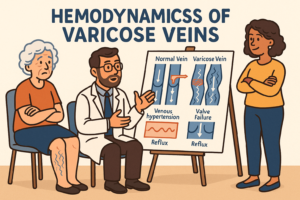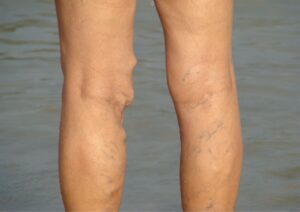Sclerotherapy is a popular and effective treatment for spider veins, a common cosmetic concern. It is important to discuss your medical history with your healthcare provider before undergoing sclerotherapy. The procedure involves injecting a solution directly into the veins, causing them to collapse and fade from view. While the process itself is relatively straightforward, the number of sessions required can vary significantly from person to person. Understanding these factors can help set realistic expectations and achieve the best possible results. Using compression stockings post-procedure is crucial to aid in healing and prevent complications.
Following post-procedural care instructions is essential to minimize the risk of blood clots.
Factors Influencing the Number of Sessions

Severity and Extent of Spider Veins
The severity and extent of spider veins significantly influence the number of sclerotherapy sessions required for effective treatment. Mild cases, characterized by a few small, superficial veins, often respond well to one or two sessions. These minor veins collapse and fade quickly with minimal intervention.
In contrast, moderate to severe cases, where there is a larger network of more prominent spider veins, require multiple sessions. Treating an extensive area with numerous veins involves more injections and a more prolonged treatment plan to ensure comprehensive coverage and successful results. Similarly, large varicose veins may require more sessions and different treatment methods, such as foam sclerosants, ultrasound guided injections, and endovenous laser treatment, due to their size and complexity.
The extent of the spider veins dictates the approach and duration of the treatment, highlighting the importance of a tailored plan for each individual’s needs. Small varicose veins, like spider veins, often respond well to sclerotherapy and may require fewer sessions.
Individual Response to Sclerotherapy Treatment
Quick Responders:
Some individuals see rapid improvements after just one session. Their veins may react well to the sclerosing solution, leading to faster disappearance. This quick response is often due to various factors such as the individual’s unique vascular structure, the effectiveness of their circulatory system, and their overall health. In these cases, the injected solution effectively collapses the spider veins on the first attempt, allowing the body to rapidly absorb and eliminate the treated veins. These individuals typically experience swift and noticeable improvements, often requiring fewer follow-up sessions to achieve their desired results. The effectiveness of sclerotherapy treatment can vary based on individual factors such as vascular structure and overall health.
Slow Responders:
Others might need additional sessions due to slower or less complete initial responses. Their veins might not collapse as readily or may require more time to completely vanish. Several factors can contribute to this slower response, including thicker or more resistant vein walls, lower effectiveness of the sclerosing agent on their specific vein type, or slower overall healing and absorption rates in their bodies. These individuals may notice only partial improvement after the initial session and may require multiple treatments to achieve full vein collapse and disappearance. The need for additional sessions can also be influenced by underlying health conditions, lifestyle factors, or genetic predispositions that affect the veins’ response to treatment. Regular monitoring and a tailored treatment plan are essential for these patients to ensure the best possible outcomes over time.
Size and Location of Varicose Veins
Smaller Veins:
Spider veins that are smaller and closer to the surface of the skin often need fewer sessions. These veins, due to their size and superficial location, are more accessible and easier to treat with sclerotherapy. The sclerosing solution can quickly and effectively collapse these smaller veins, leading to faster absorption by the body. Because they respond more readily to treatment, fewer sessions are typically required to achieve complete and satisfactory results. Additionally, the minimal nature of these veins means that less overall treatment is needed to cover the affected area, further reducing the number of necessary sessions.
Larger Veins:
Larger veins or those located deeper under the skin can be more challenging to treat and might necessitate more sessions to ensure they are fully addressed. These veins are often more resistant to sclerosing agents due to their size and depth, requiring stronger or multiple injections to achieve the desired effect. The larger volume of blood within these veins can also slow the absorption process, meaning the body takes longer to break down and remove the treated veins. As a result, additional sessions may be needed to ensure that these larger or deeper veins are completely collapsed and absorbed, and to achieve a consistent and thorough cosmetic outcome. Larger varicose veins and deep veins may require more sessions and different treatment approaches due to their size and location. This complexity underscores the need for a personalized treatment plan, as each case of spider veins can vary significantly in terms of size and location.
Recurrence of Treated Veins
While sclerotherapy is highly effective in treating spider veins, there is always a possibility of recurrence. Treated veins can occasionally reappear, particularly if the underlying causes such as venous insufficiency, hormonal changes, or genetic predispositions are not addressed. Blood clots can form in a treated vein, and immediate medical care is necessary in such cases. Factors such as prolonged standing or sitting, weight fluctuations, and pregnancy can also contribute to the recurrence of spider veins. Additionally, new spider veins may develop over time, necessitating further treatment. Regular follow-up appointments with a healthcare provider can help monitor the treated areas and manage any new occurrences promptly, ensuring long-term success and satisfaction with the treatment.
It is also important to be aware of the risk of deep vein thrombosis (DVT) as a complication of sclerotherapy. Although rare, DVT can occur, and preventive measures such as wearing compression stockings and engaging in daily walking are crucial to minimize this risk.
Lifestyle and Health Factors
Healthy Individuals:
People who maintain a healthy lifestyle, including regular exercise and proper nutrition, may experience better circulation and healing, potentially reducing the number of required sessions. Regular physical activity helps improve blood flow and strengthens the veins, making them more resilient to damage and more responsive to sclerotherapy. Proper nutrition, particularly a diet rich in vitamins and minerals that support vascular health, can enhance the body’s natural healing processes, leading to quicker absorption of treated veins. Hydration is also crucial, as it helps maintain the elasticity and functionality of blood vessels. Collectively, these healthy habits contribute to more efficient and effective treatment outcomes, often resulting in fewer required sessions. Additionally, maintaining a healthy lifestyle can help prevent the recurrence of varicose veins and spider veins.
Underlying Health Conditions:
Conditions such as venous insufficiency or hormonal imbalances can impact the effectiveness of treatment and may necessitate more sessions to achieve optimal results. Venous insufficiency, where veins struggle to return blood to the heart, can cause new spider veins to form even after treatment, requiring additional sessions to manage these new occurrences. Hormonal imbalances, particularly those related to pregnancy, menopause, or hormone therapy, can weaken vein walls and valves, leading to a higher likelihood of spider vein recurrence. These underlying health issues can complicate the treatment process, as the veins may not respond as well to sclerotherapy, and the overall healing and absorption rates can be slower. As a result, individuals with such conditions often need a more prolonged and frequent treatment plan to achieve and maintain the desired results. Regular medical check-ups and managing these health conditions effectively can also help improve treatment outcomes and reduce the need for additional sessions.
Why Some People Need More Sessions
Complex Vein Networks:
Individuals with a more intricate network of spider veins may require more sessions to target all affected areas effectively. When the veins are numerous and interconnected, it can be challenging to address them all in one or two sessions. Each injection of the sclerosing solution can only cover a limited area, so multiple treatments are often necessary to ensure that all veins are treated thoroughly. Additionally, complex vein networks may involve veins of varying sizes and depths, each of which may respond differently to treatment, further necessitating additional sessions to achieve complete results. Laser therapy is an alternative treatment option for spider vein removal, which may require fewer sessions for some individuals.
Recurrence:
Occasionally, treated veins may not respond as expected or new spider veins may develop, necessitating additional sessions. Some veins might not fully collapse or could reopen after the initial treatment, requiring further injections to achieve the desired outcome. Additionally, the formation of new spider veins in previously treated areas is not uncommon, especially if the underlying causes such as venous insufficiency or lifestyle factors are not addressed. This recurrence or development of new veins means that patients might need follow-up sessions to maintain the results of their initial treatment and ensure long-term success.
Healing and Absorption Rates:
Variations in how quickly the body absorbs the treated veins can lead to differences in the number of sessions required. Some people’s bodies may take longer to fully absorb and remove the collapsed veins. The rate at which the sclerosed veins are reabsorbed by the body can vary significantly among individuals, influenced by factors such as age, metabolism, and overall health. In cases where the absorption process is slower, additional sessions may be necessary to treat any residual veins that have not completely disappeared. Ensuring complete absorption and the full aesthetic benefits of the treatment may therefore require a more extended treatment schedule for some patients.
Why Some People Need Fewer Sessions
Minimal Spider Veins:
Those with minimal and less pronounced spider veins often need fewer sessions as there are fewer areas to treat. When the extent of the spider veins is limited, the treatment can be more targeted and efficient, allowing for a quicker resolution. Spider vein treatment, such as sclerotherapy, is effective in treating spider veins and may require fewer sessions for those with minimal spider veins. Smaller, less dense clusters of veins are easier to collapse with fewer injections, making the treatment process shorter and less intensive. As a result, individuals with only a few spider veins often see significant improvement after just one or two sclerotherapy sessions, achieving their desired outcomes more rapidly.
Good Vein Health:
Individuals with generally good vein health and no underlying venous issues are likely to respond better and faster to treatment. Healthy veins and good overall circulation facilitate the body’s ability to absorb and remove the treated veins more efficiently. Additionally, the absence of conditions such as venous insufficiency means that the veins are less prone to recurrence, and the initial treatments are more likely to be successful. Sclerotherapy is a preferred method to treat spider veins due to its effectiveness and safety. These individuals often experience quicker and more pronounced results with fewer sessions, as their bodies are better equipped to heal and maintain the treatment’s effectiveness. Maintaining a healthy lifestyle, including regular exercise and a balanced diet, can further enhance the treatment’s success and reduce the need for additional sessions.
Conclusion
The number of sclerotherapy sessions required for spider veins is influenced by a variety of factors including the severity of the veins, individual response to treatment, vein size and location, and overall health. Consulting with a qualified medical professional can provide a personalized treatment plan tailored to individual needs, ensuring the most effective and efficient outcome.
Sclerotherapy is effective for both spider veins and varicose veins, and the number of sessions required can vary based on individual factors.









